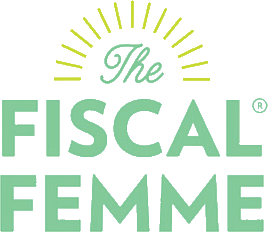How to Prepare for Tax Time to Make Filing a Breeze
If filing your taxes is something you look forward to about as much as going to the dentist, you are not alone. I polled the Fiscal Femme community and 18% of you would rather get a cavity filled than file your taxes.
Why? A lot of reasons.
It’s time consuming. We aren’t really sure what we’re doing, so all that work seems even more daunting.
AND if we’re going to owe money (instead of receive a refund), we look forward to filing even less.
Did I mention all the prep work?
Whether you file your taxes on your own or work with an accountant, we’ve got you covered. Here are 3 things you can do now to make filing your taxes a breeze.
Have your personal info handy.
There is certain personal information you’ll need in order to file your taxes. Have this information handy so you don’t have to go looking for it while you’re filing.
Social security numbers for you and anyone else on your return (ie spouses and dependents)
Date of birth for you and everyone else on your return.
Gather necessary documents.
Yes, gathering the right documents is tedious and one of the reasons we put off filing our taxes, but having a list of exactly what you need can make the process a whole lot easier.
Put on your favorite Netflix show (ideally one you’ve already seen so you can mindlessly watch) and gather the documents that apply to your situation:
Income information (including investments)
W-2 forms from your employer. This shows your total earnings in the year and how much they already set aside for taxes for you. Your employer should send this to you by February. If you haven’t received it, you can request it.
1099 forms (all types). This includes income made as a contractor above $600, through dividends and social security benefits.
Bank and other investment account statements. These will show interest income earned from your bank accounts and investment accounts. It will also show IRA contributions, student loan payments, and mortgage payments. If you aren’t sure what you need from each account, you can usually find a “tax documents” section with each financial institution that will show you what you need.
Your state and local refund from last year. This is a mistake I made. Don’t forget to check if you need to include your state refund from the previous year as income.
Social security benefits. Documentation of what social security benefits you received.
Rental income. If you earn rental income on a property, make sure to report it. Depending on the details, you may or may not be able to report the expenses.
Basically, any income you earned, you will want to be able to reference it.
Other documents
Other helpful things to have on hand:
Medical expenses. Documentation of all of your medical expenses that were not covered by insurance or reimbursed.
Proof of medical coverage.
Charitable donations. Have receipts that include the the organization, the donation amount, and the date if you plan to itemize your charitable contributions.
Mortgage information (if applicable).
Business expense records (if you run your own business).
This second list applies to qualified expenses or deductions. Take advantage of these deductions if you qualify.
Minimize your tax bill
Are there any last minute things you can do to minimize your tax bill? You might contribute to an IRA (if you can deduct will depend on your income and if you benefit from a qualified plan through work) or take advantage of a tax credit that you qualify for. Make sure to read this list so you don’t leave any extra money on the table.
If it’s not be feasible to max out your IRA now, do what you can (without putting yourself into financial distress) and start planning ahead for 2023. The earlier we plan, the easier it is to maximize deductions for next year.
If you’re getting a tax refund, plan in advance.
We’re much more intentional and strategic with our tax refunds when we make a plan in advance. While it’s great to save and put money towards our goals, it’s also okay to indulge a little too.
Maybe you decide to spend 20% of your refund on something you’ve been wanting and save or invest the remaining 80% for your top priority goals. Whatever you decide, decide it proactively.


